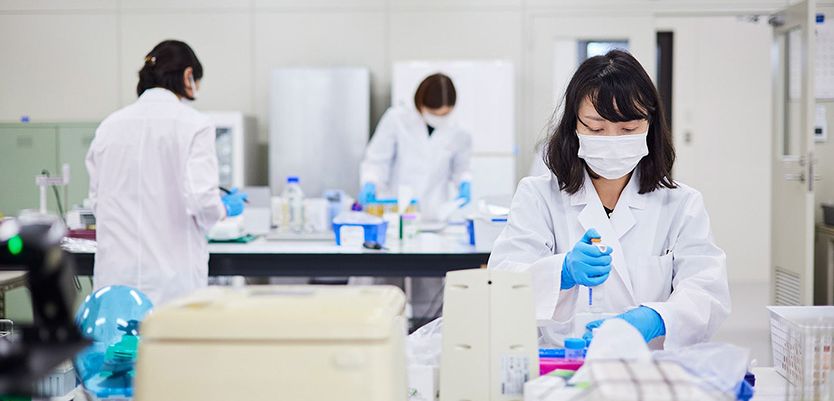理解
対象適応症に利用可能な治療法と治験薬の差別化方法を理解
推定
治験薬の期待される治療効果とその臨床的意義を推定
特定
製品の効果の大きさと臨床的意義を定量化するために必要な臨床的エビデンスの範囲と性質を特定
分析
同じ標的適応症に対して、開発中の競合薬の臨床効果を分析
By Mwango Kashoki, M.D., M.P.H., Senior Vice President, Global Head of Regulatory Strategy
Published on: Jun 13, 2025
10 min

希少疾患治療薬を開発している企業の多くが、規制に関する喫緊の課題を抱えています。それは「いつ、どうすれば、FDAの画期的治療薬指定 (BTD) を受けられるのか」というものです。
BTDは医療におけるアンメットニーズがある重篤な疾病を目的として作られている医薬品を対象としているため、希少疾患治療薬の開発において中心的な役割を果たしています。しかし、BTDの獲得は困難を伴い、成功はタイミングと申請を裏付けるデータにかかっています。
企業はBTDによって、FDAとのやり取りが増えたり、医薬品開発を促進できる集中的ガイダンスが得られるなど、貴重なメリットが得られることを認識しています。また、BTDは治験薬が予備臨床データに基づいて、FDAや患者さんにとって多大なる可能性を示しているという外部検証を、投資家に提示することが多いことも企業はわかっています。
BTDは希少疾患治療薬における規制戦略の中核的要素になっています。2017年から2022年までのFDAによる新薬承認をパレクセルが分析したところ、希少疾患用医薬品は、全承認の53% (307件中164)、BTD承認の72% (119件中86件) を占めていることがわかりました。さらに、BTD希少疾患用医薬品の93%が、優先審査による迅速審査を受けました。
Percentages
53%
全承認の53%が希少疾患用医薬品
72%
全画期的治療薬(BT)の72%が希少疾患用医薬品
93%
全希少疾患用BTの93%が優先審査を受けました
Numbers
164307
307件の承認のうち164件が希少疾患用医薬品
86119
119件の画期的治療薬(BT) のうち86件が希少疾患用医薬品
8086
86件の希少疾患用BTのうち80件が優先審査を受けました
出典:Drugs@FDA、年次報告書、年ごとの生物学的承認、プレスリリース、データベースから取得した主要なFDAデータに基づくパレクセルの分析。2017年1月1日から2022年12月31日までにFDA医薬品評価研究センター (CDER) と生物製剤評価研究センター (CBER) によって承認された、すべての新薬承認申請 (NDA) と生物学的製剤承認申請 (BLA) を分析しました。合計には新規分子成分 (NME) (新薬とオリジナルのBLA) の承認が反映されており、補足NDA/BLA (新たな適応症)、簡略NDA/BLA (後発医薬品)、タイプ3および5 NDA (新しい用量、新しい製剤) は除外されています。このデータベースには、CDERにより承認された合計149件の希少疾患指定製品と、CBERにより承認された合計15件の希少疾患指定製品が含まれています (CBERの承認には、アッセイ、分画血漿製品、パッチテスト、試薬、ワクチン、組織移植製品は含まれません)。画期的治療薬 (BT) の承認は、製品が同時に複数の適応症で承認された場合でも、1件として計算されました (FDAでは各適応症を個別のBT承認として計算します)。FDAの年次報告書には記載されていませんが、弊社の分析には、2021年の承認2件 (TepmetkoおよびWelireg) がBT承認として含まれています。FDAの概要説明書類で、この2件がBT指定を受けていたことが示されています。
BTDプログラムは、がん研究グループの取り組みがきっかけとなり、FDA Safety and Innovation Act (FDA安全およびイノベーション法) (FDASIA) に基づく新しいFDA機関として2012年に発効しました。重篤な疾患または生命を脅かす疾患の治療を目的とした治験薬で、予備的臨床エビデンスにより、1つ以上の臨床的に重要な評価項目において、既存の治療法に比較して顕著な改善が示されているものに、参加資格があります。
BTDステータスを獲得するのは容易ではありません。プログラム開始から2022年12月までにFDAが承認したのは、BTD申請の40% (1098件中439件) で、47% (1098件中512件) が却下されました。残りの13%については、企業がさまざまな理由で取り下げました。しかし、希少疾病に指定された適応症の医薬品は、おそらくアンメットニーズ基準を満たす比較優位性があるため、一般疾患の医薬品よりもBTDを達成する可能性が高くなります。パレクセルのFDAデータの分析によると、2017年以降に承認された新規希少疾病用医薬品の52% (164件中86件) がこのプログラムの要件を満たしていました。
FDAの迅速審査プログラムには、BTDに加えて、ファストトラック (FT) 指定、迅速承認 (AA)、優先審査 (PR) などがあります。パレクセルの分析によると、承認された希少疾病用BTD医薬品の60%が、2つ以上の迅速開発プログラムを使用していました。これらのデータは、希少疾患治療薬開発における「積み重ね式」迅速審査プログラムの利用に関する最近の研究と一致しています。
Use of FDA expedited development programs²
FDAが承認した新規希少疾患用BTD医薬品と生物製剤、2017~2022年 (n=86)
72%
承認された希少疾病用BTD医薬品の60%が「積み重ね式」迅速承認プログラムを使用
使用されたFDA迅速審査メカニズム:
出典:パレクセルの分析。データソースと方法論については、上記の図をご参照ください。
希少疾患の状況で複数の迅速審査プログラムを利用した製品の最近の例としては、KRASG12C変異を持つ非小細胞肺がん患者用の不可逆的なKRASG12C阻害剤であるKrazati (アダグラシブ) があります。FDAはFIH試験で最初の患者さんに投与されてから、約4年後の2022年12月12日に、Krazatiに迅速承認を与えました。2021年6月、開発のほぼ半ばにBTDを獲得し、FT指定の恩恵も受けました (ただしPRは獲得しませんでした)。Krazatiの開発期間は4.1年で、最近報告された希少疾病用医薬品の平均開発期間10.1年よりも6年短いものでした。Krazatiは、AA、BTD、FTプログラムに加え、FDAのリアルタイム オンコロジー レビュー プログラムと評価支援プログラムによる審査も受けました。
開発の早い段階で画期的治療薬指定を受けた医薬品を持つ企業は、時間の経過とともにFDAとのやり取りが増え、効率化されたプログラムと一致させる機会が増えます。
Mwango Kashoki
Senior Vice President, Regulatory Strategy Consulting, Parexel International
BTD申請に適切な戦略とタイミングを選択することは、企業にとって重要な課題です。プログラムの優位性を最大化するために、企業はできるだけ早く (理想的には第III相の治験が始まる前に) BTDの申請を提出する必要があります。実現可能な場合、例外的なケースではありますが、第I相の試験結果に基づいてBTDを申請することもできます。たとえばパレクセルでは、BTDを裏付けるための予備的有効性評価を含む用量設定試験などの初期段階の臨床試験をデザインするクライアントを支援してきました。
パレクセルでは医薬品がBTDの対象となる可能性を評価する際には、次の点に重点を置きます。
弊社はこの包括的で多分野にわたる評価を行った後、企業が現在利用可能な (または将来の) 臨床データによってBTD申請を裏付けるのに十分なほど臨床的ベネフィットが「増大する」可能性があるかどうかを判断できるよう支援します。規制当局はデータの論理的根拠に重点を置いていますが、これは化合物とプログラムの両方によって決まります。
パレクセルでは企業に対して、自社の医薬品が適格となる可能性がある場合は、FDAに早期にBTDの可能性について提案することを推奨しています。たとえば一部の医薬品については、pre-INDミーティングで議論できるように、BTDに関する質問を含めることを提案しています。クライアントには特定の臨床検査に基づき、治験薬の期待される利点を裏付けるデータが存在すると仮定した場合、将来的にBTDを申請することが合理的かどうかをFDAに確認するよう勧めています。先行治療法がない場合や、臨床的ベネフィットを裏付けるために提案された臨床評価項目が新規である場合など、FDAはBTD申請に有益と思われる情報の種類について、高レベルのフィードバックを提供することがあります。この質問が時期尚早である場合、当局は率直にその旨を伝えます。
最近、弊社のクライアントは、承認済み医薬品の処方変更版である自社製品について、pre-INDミーティングでFDAからBTD申請が合理的であるとの確認を得ました。この処方変更は新たな投与経路を採用し、即効性のある効果的な治療法がほとんど存在しない重篤な疾患を有する新たな患者層を治療するものです。
医薬品がまだBTDの対象でない (または将来も対象になる見込みがない) 場合、開発者はFTプログラムを検討できます。FTのエビデンスのしきい値はBTDよりも低く、FDAとの頻繁なやり取り、ガイダンスを受ける機会の増加、FDAによる販売承認申請の審査期間短縮といった実用的なメリットもあります。
開発の早い段階でBTDを受けた医薬品を持つ企業は、時間の経過とともにFDAとのやり取りが増え、効率化されたプログラムと一致させる機会が増えます。その結果、開発タイムラインを短縮することができます。
ただし、BTDは開発の速度や成功を保証するものではありません。たとえば、希少疾患に対するプレシジョンメディシンを開発している企業は、自然歴研究の実施や外部対照データの収集が必要になる場合があります。また、ゲノムバイオマーカーの特定と検証が必要となる場合もあり、そのためにはアッセイの開発や検査を実施する能力のあるラボの選定が不可欠です。さらに、地理的に分散している患者さんを募集する必要もあります。BTDはこうした必要不可欠な作業負荷を軽減するものではありません。
より一般的には、BTDの基準を満たすために必要な臨床的エビデンスの性質上、BTDは開発の第II相の後にのみ取得できます。開発後期にBTDを取得した場合でも、医薬品開発の効率化についてFDAとやり取りしたり、FDAからアドバイスを受けられることが保証されるため、依然として価値があります。
Contributing Expert
パレクセルでは希少疾患の臨床研究は業務の不可欠な一部であり、私たちはそれを個人的な問題として捉えて取り組んでい。弊社の希少疾患センター オブ エクセレンスは、スポンサーが希少疾患の医薬品開発で最大限の成功を収めることを支援します。臨床およびレギュラトリーに関するコンサルティングの専門知識を統合する弊社の手法により、お客様は複雑な試験でも、デザイン、計画、実施を最も効率的に行うことができます。多分野にわたる臨床および商業チームが、希少疾患の臨床試験における最適なエンドポイントを導くことで、適応型試験デザインのナビゲートを支援します。パレクセルと協力して、医薬品開発を加速し、市場参入の成功の可能性を最大限に高めましょう。ます